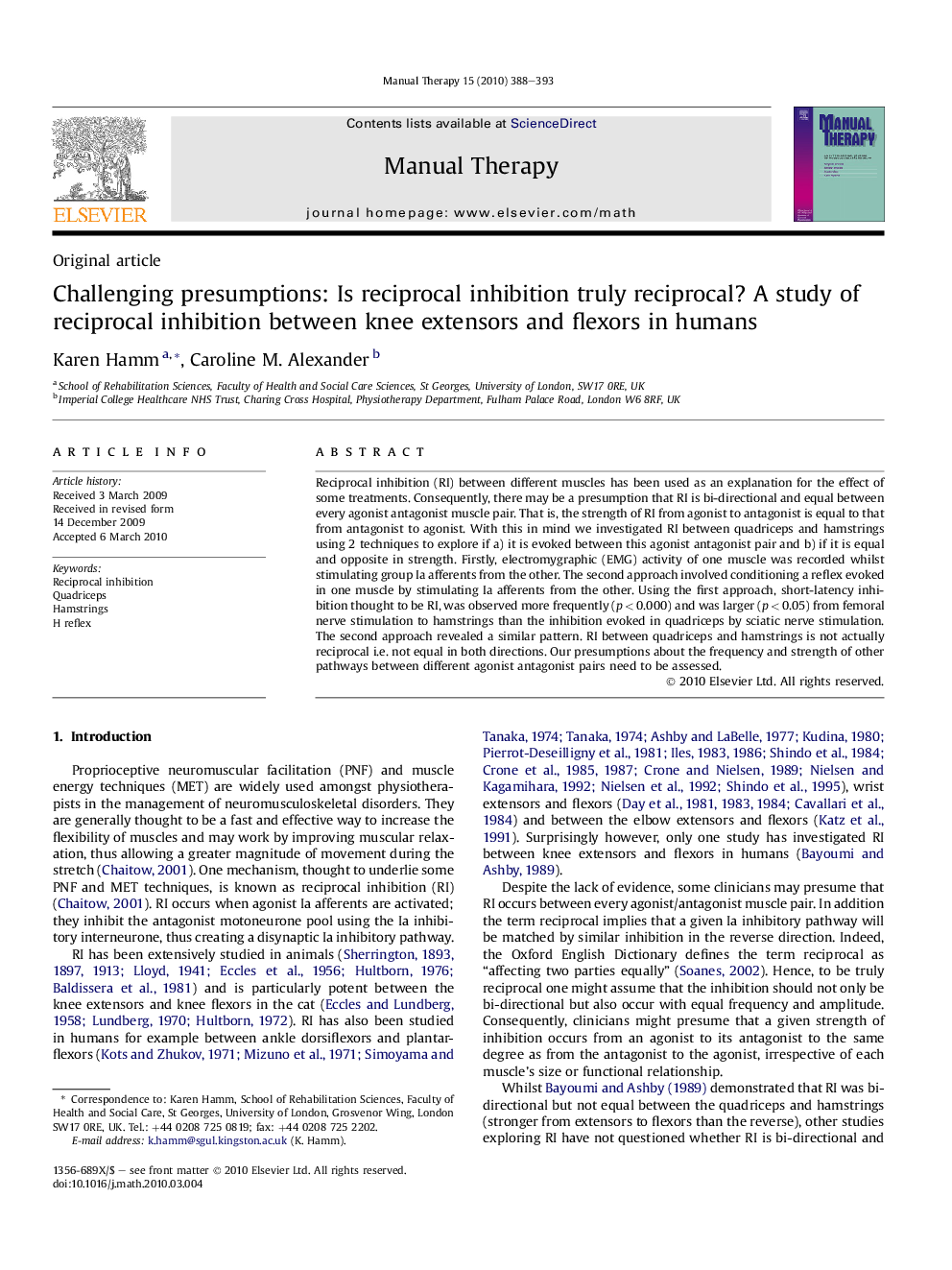| Article ID | Journal | Published Year | Pages | File Type |
|---|---|---|---|---|
| 2626020 | Manual Therapy | 2010 | 6 Pages |
Reciprocal inhibition (RI) between different muscles has been used as an explanation for the effect of some treatments. Consequently, there may be a presumption that RI is bi-directional and equal between every agonist antagonist muscle pair. That is, the strength of RI from agonist to antagonist is equal to that from antagonist to agonist. With this in mind we investigated RI between quadriceps and hamstrings using 2 techniques to explore if a) it is evoked between this agonist antagonist pair and b) if it is equal and opposite in strength. Firstly, electromygraphic (EMG) activity of one muscle was recorded whilst stimulating group Ia afferents from the other. The second approach involved conditioning a reflex evoked in one muscle by stimulating Ia afferents from the other. Using the first approach, short-latency inhibition thought to be RI, was observed more frequently (p < 0.000) and was larger (p < 0.05) from femoral nerve stimulation to hamstrings than the inhibition evoked in quadriceps by sciatic nerve stimulation. The second approach revealed a similar pattern. RI between quadriceps and hamstrings is not actually reciprocal i.e. not equal in both directions. Our presumptions about the frequency and strength of other pathways between different agonist antagonist pairs need to be assessed.
